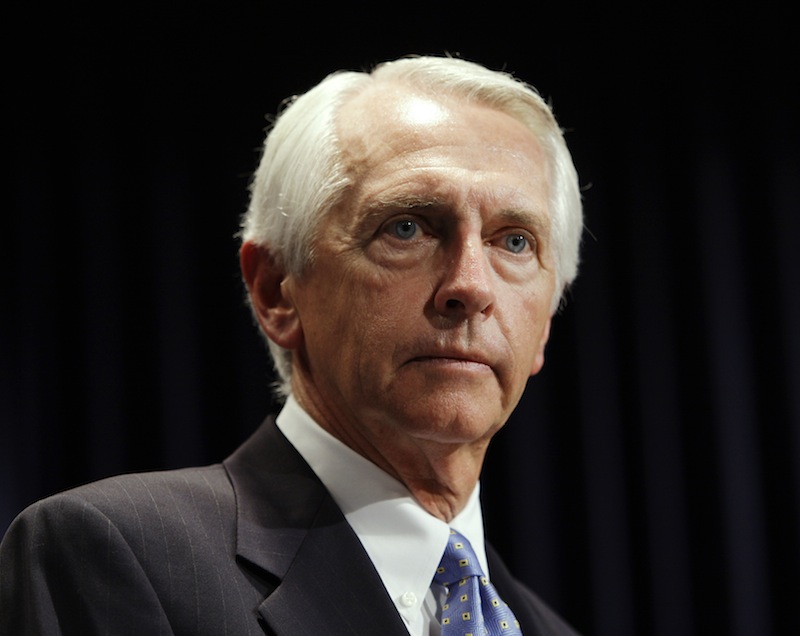Kentucky did it right. The state’s online health insurance marketplace has become Obamacare’s city on a hill while the federal HealthCare.gov has been flummoxed by a month of glitches and bad press. Whatever the federal website seems to have failed to do to ensure its success on the Oct. 1 launch, Kentucky did.
Kentucky, with its deeply conservative congressional delegation, might seem like an unlikely place for Obamacare to find success. But Democratic Gov. Steve Beshear saw the law — and a state-built marketplace — as an opportunity to help put the state on a path to greater health.
His state routinely ranks toward the bottom in overall health, and better health coverage is one step toward reversing that norm, he said.
“For us to make a transformational difference, we needed to do something game-changing.” Beshear told TPM in an interview. “The (Affordable Care Act) provided us a tool to do that. It’s succeeded so far beyond our wildest dreams.”
Kentucky has been cited by numerous sources — the Wall Street Journal, NPR, the Advisory Board Company — as among the best of the best marketplaces since its launch. While the federal site has stumbled, Kentucky is being held up as evidence that the marketplace concept can work in practice.
The numbers back it up: more than 26,000 people have enrolled in coverage, more than 50,000 have started applications and more than 300,000 unique visitors have checked out what the marketplace has to offer. For a state with about 625,000 uninsured people, those are promising figures.
President Obama even called Beshear to congratulate him on the exemplary rollout.
It started with the commitment to build the state’s own website rather than default to the federal version. Beshear created the exchange via executive order, over the objections of a Republican-controlled Senate, which sought other means — including an effort to prevent the exchange from finding office space — to block the site’s creation.
“Each state is unique,” Beshear said in explaining his decision. “We felt that we could best address the uniqueness of Kentucky by designing our own exchange instead of trying to take a cookie-cutter approach that of necessity a federal exchange would be.”
From that point forward, Kentucky’s game plan for a successful website launch could be read as a counterpoint to the mistakes that the Obama administration made in building its own website. The recipe for success in Kentucky was: A pared-down website engineered to perform the basic functions well and a concerted effort to test it as frequently as possible to work out glitches before the Oct. 1 launch.
Beshear officially created the marketplace, now named kynect, on July 17, 2012, a few weeks after the U.S. Supreme Court upheld the Affordable Care Act. In October 2012, the state hired software developers to build the technological infrastructure behind the marketplace.
Testing was undertaken throughout every step of the process, said Carrie Banahan, kynect’s executive director, and it was crucial because it allowed state officials to identify problems early in the process. She laid out the timeline like this: From January 2013 to March, they developed the system; from April to June, they built it; from July to September, they tested it.
That stands in stark contrast to the picture painted by federal contractors at last week’s hearing on HealthCare.gov, which underwent testing only in the two weeks before launch. They stressed that they wished they had more time to test the marketplace’s functionality.
“It would have been better to have more time,” Andrew Slavitt, group executive vice president at Optum/QSSI, told the committee.
From a design standpoint, Kentucky made the conscious choice to stick to the basics, rather than seeking to blow users away with a state-of-the-art consumer interface. A big part of that was knowing their demographics: A simpler site would make it easer to access for people without broadband Internet access, and the content was written at a sixth-grade reading level so it would be as easy to understand as possible.
“We wanted it to have a branded feel, but that was not the most important part,” said Gwenda Bond, an exchange spokesperson. “The most important part was that it works. I think a lot of people would say that simplicity is good website design.”
“It’s not glitzy, but it’s very efficient,” Banahan added.
Beyond its operational function, the marketplace also plays a role as an ambassador of sorts to convince skeptical residents who might not be inclined to support anything to do with the Affordable Care Act. After all, this is a state where President Obama lost by more than 20 points in the 2012 election.
The smooth launch should help those people understand what they stand to gain from the health care reform law, Beshear said.
“What we’ve found in Kentucky when we started talking with people was that there was a huge amount of misinformation and misunderstanding. People were very confused,” he said. “What I’ve been telling them is: Look, you don’t have to like the president, and you don’t have to like me. It’s not about the president and it’s not about me. It’s about you, it’s about your family, it’s about your children.”
“So do me a favor. It won’t cost you a dime to go on that website and just find out what you might qualify for. I’ll guarantee you you’re going to like what you find, and that’s what’s been happening.”






